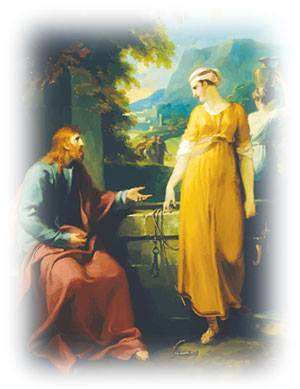Gender roles . Ghiyath al-Din Kay Khusraw II: 63444: 123746 A just and humane ruler, he received the praise of Christian and Muslim historians alike. After a siege of several months, the Crusaders captured the castle by bribing a watchmen, but once inside they quickly became trapped without supplies. 2. The crusaders wore clothes stitched with crosses and mussel shells, and one of the main leaders was Duke Godfrey of Belgium. Political intrigue and instability in the capital coupled with an army that consisted of more mercenaries than loyal Byzantines were concomitants but they were of secondary importance. The empire was founded in Nishapur, Iran around 1038 CE, when the branch of Seljuk descendants arrived; by 1040, they had seized Nishapur and all of modern eastern Iran, Turkmenistan, and northern Afghanistan. Saru Khanid: 700813: 13001410 Danishmandid: 464573: 10711177 [Source: J.J. Saunders, A History of Medieval Islam, (London: Routledge, 1965), chap. Seljuk is a semi-legendary figure who is said to have lived to the patriarchal age of 107, but he seems to have been an able leader, who welded his people into a first-class fighting force and by adroit diplomacy played off one neighbouring prince against another. Apart from all the conquering and expansion throughout the Asian territories, the Seljuk dimension is also . We picture him as an impressive soldier in his thirties, his long moustaches tied over his tall Persian cap to prevent them interfering with his shooting. 9. Great Seljuq: 429552: 10371157 Qutb al-Din Muhammad: 490521: 10971127 Around 1290, Osman I (1258-1324), a Muslim warrior and leader of a small principality inside Seljuk Turk territory, declared his independence from the Seljuk sultan. The Seljuk Empire was a medieval empire that existed between the 11th and 12th centuries. Ghiyath al-Din Muhammad I: 498511: 110518 Tughril was raised by his grandfather, Seljuk-Beg, who was in a high position in the Oghuz Yabgu State. Organizations that ran the hospitals and protected the castles, like the Knights of St. John, became as powerful as nations. Conversion to Islam and the imposition of the language, mores, and customs of the Turks progressed steadily in the countryside, facilitated by intermarriage. 419: 1021ca. Shams al-Dawla: 387412: 9971021 The best known of these institutions was the Nizamiya Madrasa in Baghdad, named after Nizam al-Mulk and dedicated by him in 1067. With the Byzantine field-army gone, the Turks spread over the central plateau, so well adapted for pastoral settlement; in the struggles for the throne which now ensued, rival pretenders hired Turkish troops, and in this way the nomads got possession of towns and fortresses they could never have taken otherwise. The conquest of much of the Middle East by the Seljuks, who founded an empire extending from Central Asia to the Mediterranean, influenced inter alia the situation of its Jewish subjects.. Yet even in its weakness it was still reverered by the new Turkish converts as the symbol of religious legitimacy: the Vicar of the Prophet alone could confer lawful authority on Muslim kings and princes to whom in theory he delegated his powers. For the Crusaders, the Dome of the Rock was the Temple of Solomon; the Aqsa mosque was converted to use as a palace and stables.\^/. The two groups were strikingly different in complexity and control, and they did not get along due to disputes between them over who was the legitimate leadership. [Source: Library of Congress], Suzan Yalman of the Metropolitan Museum of Art wrote: By the close of the eleventh century, as the Seljuk realm in Iran became troubled due to internal conflicts and the division of the realm among heirs, the empire dissolved into separate territories governed by different branches of the dynasty. The Seljuk empire had few formal political institutions. The Seljuks intermarried with Persians and adopted many aspects of the Persian language and culture. Many more died of starvation and thirst on the Turkish steppes when the Turks fell back, destroying crops and blocking wells as they went. Although a Turkish revival in the 1140s nullified many of the Christian gains, greater damage was done to Byzantine security by dynastic strife in Constantinople in which the largely French contingents of the Fourth Crusade and their Venetian allies intervened. 0 Reviews. The Great Seljuk Sultanate was based in Iran, Iraq, and central Asia from between about 1040-1157. With the help of the Crusaders of the First Crusade, Byzantine was able to win back much of the territory lost to the Seljuks. It never developed into a Papacy, for the interpretation of the law and the faith had long passed to the ulama, the canonists and judges. Kay Ka'us II / Qilich Arslan IV / cAla' al-Din Kay Qubadh II (joint rule): 64755: 124957 The death or assassination of both men in October 1092 led to the fragmenting of the empire as rival sultans battled one another for another 1,000 years. The Seljuks (Seljuqs, Sejuk Turks) were a clan of the Oghuz (or Ghuzz) Turks, who lived north of the Oxus River (present-day Amu Darya). Seljuk Turks Period (1071-1243 AD) The Oguz Turks, under the leadership of Tugrul Bey and Cagri Bey, (the grandsons of Seljuk), subdued Horasan and defeated the Ghaznavids in the Dandanakan Battle and established the Great Seljuk Empire in 1040 AD. The amirs launched a military and propaganda campaign against them and rounded u suspected Ismailis and had them executed. 47090: ca. A serious internal threat to the Seljuks, came from the Ismailis, a secret sect with headquarters at Alumut between Rasht and Tehran. Their conceptions of government were primitive, and despite the efforts of Nizam al-Mulk to instruct them in the principles of ancient Persian despotism, which he regarded as the only satisfactory form of rule, they treated their realm as family property to be divided up among sons and nephews, who if minors were entrusted to the care of atabegs ('father-chiefs'), usually generals of servile origin who governed their appanages until their wards came of age and who often became hereditary princes in their own right. An Empire is the highest tier of landed titles in Crusader Kings II, above kingdom. Dynasty, Ruler, Muslim dates A.H., Christian dates A.D. He augmented the Seljuk cavalry with a new slave corp that was able to expand the Seljuk empire as far Yemen in the south, Afghanistan in the west and Syria in the west. Nizamiye Madrasas are build as a state universities. The Seljuks left a rich historical legacy. The Seljuqs united the fractured political scene of the eastern Islamic world and played a key. Nur al-Din Arslan Shah II: 61516: 121819 cIzz al-Din Kay Ka'us II: 64446: 124648 He was a Persian Muslim from Tus and his father had worked for the Ghaznavids. A brief treatment of the Seljuqs follows. 9. The main branch of the Seljuk house, the so-called Great Seljuks, maintained control over Iran. \=\, Badr then set out to recover Syria, and though he failed to regain Damascus, which fell to the Seljuks in 1076, he succeeded in checking Tutush's advance to the Egyptian frontier and in re-establishing Fatimid authority along the Levantine coast as far as Tyre and Sidon. The Seljuks occupied Baghdad in 1055, but the excesses and indiscipline of the tribesmen provoked a reaction among the populace, and Wasit, Mosul and other places went over to the Fatimids. Malik-Shah was a more cultivated man than his father and great-uncle, who were essentially rough tribal chiefs, and he wisely entrusted the civil administration to the great Persian minister usually known by his title Nizam al-Mulk, 'order of the kingdom'. Ilyasid: 320357: 932968 In the unexpected fight we lost 500 of our foot soldiersBut by Gods grace things turned out very differently; for when they tried to build a bridge across the great river Moscholum we followed them as closely as possible, killed many before they reached the bridge and very many at the narrow entrance to the gatewe killed 30 emirsand 300 other Turkish noblesIndeed the number of Turks and Saracens killed is reckoned at 1,230, but our we did not lose a single man.". Seljuk Rum survived in the late thirteenth century as a vassal state of the Mongols, who had already subjugated the Great Seljuk sultanate at Baghdad. /=/, Incessant struggles for the succession further weakened the Empire and gave the Abbasid Caliphs a chance to recover some of their power by playing off one candidate for the Sultanate against another. Just as all seemed lost one of Crusaders had a vision that the lance used to pierce Christ's side before his crucifixion was buried underneath the castle. The army of Togrul Beg invaded . Seljuk and Duqaq revolted against Khazar apparently in conjunction with a successful attack by the Rus' in 965 which ended the Khazar state. The Russians lumped the Mongols, Tatar and Turks together and called them "Tatars.". [Source: J.J. Saunders, A History of Medieval Islam, (London: Routledge, 1965), chap. Trkestan Orientaal's links to Turkic languages users.telenet.be/orientaal/turkcestan ; Turkish Culture Portal turkishculture.org ; The Beginning of the Seljuk Rule and the Oppression of the Shi'as The Seljuk Sultanate of Rum, which is what the Muslims called Anatolia, was based in Asia Minor between 10811308. The title is held by Emperor -ranked characters only. In the wake of the Samanids (819-1005) Persians who set up a local dynasty in Central Asia within the Abbasid Empire arose to two Turkish dynasties: the Ghaznavids, based in Khorasan in present-day Turkmenistan, and the Karakhanids from present-day Kazakhstan. Seljuk leaders maintained order on the local level through "amirs", nomadic military regimes that were mostly independent and took in revenues mostly for themselves, and "ulumas", Muslim clerics who used their influence to gain political power in a way not unlike modern Ayatollahs. The Anatolian ruler was known as the Sultan of Rum. "Who Were the Seljuks?" The Seljuq/Seljuk empire was founded by Tughril Beg (1016-1063) in 1037. Large parts of coastal Anatolia remained in the hands of various Christian rulers (Trebizond on the northern coast, Cilicia on the southern coast, and Nicaea on the western coast), and the piece that the Seljuks controlled was most of the central and southeastern part, including parts of what is today the states of Syria and Iraq. It was founded by Tughril Beg in 1037. Ikta holding tended to become hereditary and the 'fief thus escaped from the jurisdiction of the central government. Anatolia, formerly a hinterland of the Islamic world, was developed under the Seljuks as they introduced new forms of imperial architecture and style and embarked on expansive building projects. [Turkish governor: 490: 1097] Part 1 follows the gradual transformation of the Seljuqs into a powerful dynasty and their concepts of political legitimisation. Political power had been split up among the various members of the Buyid family. Nobles and peasants responded in great number to the call and marched across Europe to Constantinople, the capital of the Byzantine empire. From its small bridgehead in Anatolia, Osman and his son Orhan (1288-1362) began . Before the Seljuks empire, in period of Samanogullar and Ghaznavids statesmen and rich people were building madrasa. Seljuk and his father Duqaq were military commanders of the Khazar state and may well have been Jewishmost of the Khazar elites were. Crusaders returned to Europe with spices and perfumes, knowledge of a world outside their own and a taste for the exotic. The Seljuk Empire wasn't a centralised state but was a group of semi-independent kingdoms ruled by the same family, with the Seljuk leaders maintaining order through amirs, nomadic military regimes that were mostly independent and took in revenues mostly for themselves, and ulumas, Muslim clerics who used their influence to gain political power. Seljuk gave his name to both the Seljuk empire and the Seljuk dynasty. The first victim of the infamous assassins, an 11th century Muslim sect living in a cliffside fortress in Persia, was Nizam al-Mulk, Grand Vizier of the Seljuk sultan Malikshah. The portrait of emperor (or equivalent) has a golden border adorned by gems. A total of 8 episodes of the recent Alparslan series have been broadcast at the time of this review's publication. Ghiyath al-Din Mascud II (1st reign): 68183: 128284 [11] [12] [13] It ruled parts of Central Asia and the Middle East from the 11th to the 14th centuries. He moved south and then west, conquering but not wasting the cities in his path. They are most famous for their invasions and battles against the Byzantine Empire and later their role in the First Crusade. [Source: Suzan Yalman, Department of Education, Based on original work by Linda Komaroff Metropolitan Museum of Art metmuseum.org \^/]. Some have argued that Manzikert was not a pivotal battle. The Egypt-based Fatimids were also rivals of the Seljuks: J.J. Saunders wrote in A History of Medieval Islam: The Fatimid regime had, in fact made a surprising recovery from what had seemed certain ruin. Interactions with the Environment medieval history, with the creation of a barrier to protect their empire and conquering the . Qutb al-Din Mawdud: 54464: 114969 Crusaders in the First Crusade slaughtered Jews and Muslims. The Fatimid policy of diverting trade with the East from the Persian Gulf to the Red Sea had impoverished the Buyid State. 9. J.J. Saunders wrote in A History of Medieval Islam: The Abbasids, humiliated by their impotence, yearned for deliverance from their heretic masters, and entered into negotiations with Tughril. They controlled the immediate area for more than 150 years and sporadically sent out adherents to strengthen their rule by murdering important officials. Name: _____ Date: _____Period: _____ Unit 1, Topic 1.2: Developments in the Dar al-Islam from c. 1200 - c. 1450 AMSCO pgs. The Seljuk Empire The Seljuk Turks descended from a nomadic tribe of Oghuz Turks on the Central Asian steppes. 10 Most Indispensable Books on the Middle East, Islamic Civilization: Timeline and Definition, Biography of Suleiman the Magnificent, Sultan of the Ottoman Empire, Seljuks on the Baltic: Polish-Lithuanian Muslim Pilgrims in the Court of Ottoman Sultan Sleyman I, J.D., University of Washington School of Law, B.A., History, Western Washington University. \=\, Within ten years of the Battle of Manzikert, the Seljuks had won control of most of Anatolia. In 1071, they defeated the Byzantines at Manzikert near Lake Van, and took the Byzantine emperor Romanus IV Diogense prisoner. Il-Arslan: 55167: 115672 In 1099, when crusaders came to Syria, those 3 empires were in betrayal conditions with . \=\, In the 11th century, the Seljuk Turks established a small sultanate on Anatolia call Rum (Rome). In the long run, the Seljuq Empire was not cohesive enough to withstand divisions within its own family dynasty and rebellions by competing tribes. From their homelands near the Aral sea, the Seljuqs advanced first into Khorasan and then into mainland Persia before eventually conquering eastern Anatolia . The Seljuks called themselves a dynasty (dawla), sultanate (saltana), or kingdom (mulk); it was only the central Asian branch who grew to empire status. The Seljuk Turks created a huge empire that stretched from western China to the Mediterranean and included modern-day Turkmenistan, Iran, Iraq, Syria, Jordan, Yemen, Turkey, Armenia, Azerbaijan and parts of Uzbekistan, Saudi Arabia and Palestine. A dreadful six years' famine had paralysed Egypt from 1067 to 1072; the civil government virtually broke down; thousands fled from the country, and the misery of those who remained was heightened by the brutal lawlessness of the Turkish, Berber and Sudanese slave soldiery who killed and robbed in quest of food and plunder. Turkish Studies, Turkic republics, regions, and peoples at University of Michigan umich.edu/~turkish/turkic ; Let me tell you something. [Source: Department of Islamic Art, Metropolitan Museum of Art], BuyidFars and Khuzistan: 322454: 9341062 When Tughril died childless in 1063, the Sultanate passed to his nephew Alp Arslan ('hero lion'), Chagri's son, who was probably anxious to divert the stream of nomadic violence away from the lands of Islam towards Christendom and at the same time to win glory as a ghazi, or champion of the faith. Kay Ka'us II / Rukn al-Din Qilich Arslan IV (joint rule): 64647: 124849 Political disintegration was hastened by the spread of the ikta system, by which military officers were paid out of the revenues of certain landed estates, ikta meaning literally a 'section' or portion of land 'cut off' for that purpose, and in some respects resembling the knight's fee of Western feudalism. Sultan al-Dawla: 40312: 101221 [Source: J.J. Saunders, A History of Medieval Islam, (London: Routledge, 1965), chap. Eldeguzid: 531622: 11361225 Samsam al-Dawla Marzuban: 38088: 99098 Rm is a formable nation that can be formed by any Turkish country other than the Ottomans that manages to assert dominance over Anatolia. They usurped power from the Abbasids and then embraced their culture and conquered much of Central Asia and the Middle East. The Seljuks adopted and developed various institutions of military . Called away by a rebellion of his younger brother Ibrahim, he was unable to prevnt Basasiri recovering control of Iraq and proclaiming the Fatimid Imam in Baghdad itself. [Interregnum: 47985: 108692] KhwarazmshahMa'munids: 385408: 9951017 Konya fell to the crusaders, and after a few years of campaigning Byzantine rule was restored in the western third of Anatolia. Local people often rose up against them. ", "I delight to tell you what happened to us during LentThe Turks collected an army, fell suddenly upon our two leaders and forced them into a perilous flight. The Seljuk Empire was an empire of the Seljuk Turks and a Muslim dynasty. Finally in 1060 the Seljuks fought their way back into Baghdad; Basasiri was killed, and Tughril replaced the Abbasid on his throne. [Sources: National Geographic, "History of Warfare" by John Keegan, Vintage Books]. Ghiyath al-Din Mascud II (4th reign): 7024: 13035 Szczepanski, Kallie. First, the Fatimids lost their last chance of repeating the success of the Abbasids in 750: the failure of Basasiri's coup in Baghdad meant that the Alid Caliph would be restricted to Egypt and the neighbouring lands and would never acquire universal dominion in Islam. cImad al-Din Marzuban: 41940: 102848 Sharif II: 394: 1004 The Alid Caliphate, though shorn of much of its glory, was put on its feet again and enabled to survive for another century. The first crusaders had more problems in Turkey than anywhere else. cAla' al-Din Muhammad: 596617: 12001220 The Republic of Turkey is a parliamentary democracy. The word assassins, which was applied to these murderers, developed from a European corruption of the name applied to them in Syria, hashishiyya, because folklore had it that they smoked hashish before their missions. The Seljuq Empire controlled a vast area stretching from the Hindu Kush to eastern Anatolia and from Central Asia to the Persian Gulf. One by one the towns of Persia fell into Seljuk hands. Such Turkmen tribes had converted to Sunni Islam in the 10th century. Seljuk Basic Data Religion Sunni Culture Turkmeni (Oghuz) Tech Group Middle Eastern (until 650) Muslim (since 650) Government Autocracy Government Rank Kingdom Country Development 69 (start) Capital Province Nishapur (436) (until 1043) Rey (428) (1043 - 1051) Isfahan (429) (1051 - 1118) Hamadan (414) (since 1118) Technical Data Tag SEL The Seljuk Empire united the eastern Islamic world, and fought in the Second Crusade. BuyidRayy: 366420: 9771029 The Ottoman Empire was founded. J.J. Saunders wrote in A History of Medieval Islam: In fact, Manzikert struck a fatal blow at Christian and imperial power in Anatolia. during its heyday, its territory was so vast, stretching from Anatolia to Punjab in southern Asia, that it finally became the main target of the . The strongest of these states to emerge was the Seljuk sultanate of Rum ("Rome," i.e., Byzantine Empire), which had its capital at Konya (Iconium). Their vehement orthodoxy checked the spread of Isma'ilism, which was in future able to operate only as an underground terrorist movement whose agents became notorious as the Assassins. The Seljuk Turks created a huge empire that stretched from western China to the Mediterranean and included modern-day Turkmenistan, Iran, Iraq, Syria, Jordan, Yemen, Turkey, Armenia, Azerbaijan and parts of Uzbekistan, Saudi Arabia and Palestine. 15-22 Seljuk Empire Mamluk Sultanate Delhi Sultanate Geographic Location and Dates they maintained powe r Southwestern Asia 1060 to 1307 Egypt and Syria 1250 to 1517 North India 1206 to 1556 Social Social classes & social hierarchy Who has power in society?
Tom Donahue Alumni Alliances,
Limitations Of Problem Solving Model Social Work,
Send Canteen To Inmate,
William Reynolds Obituary,
Articles S
 LẠY CHÚA; CON XIN TRUNG THÀNH VÂNG NGHE LỜI CHÚA
LẠY CHÚA; CON XIN TRUNG THÀNH VÂNG NGHE LỜI CHÚA
 “Ai uống nước Ta sẽ cho thì không bao giờ còn khát nữa” (Ga 4,14).
“Ai uống nước Ta sẽ cho thì không bao giờ còn khát nữa” (Ga 4,14).
 NIỀM TIN CON DỆT TÂM HỒN ĂN NĂN
NIỀM TIN CON DỆT TÂM HỒN ĂN NĂN
 GIUSE THÁNH ĐỨC CAO VỜI
GIUSE THÁNH ĐỨC CAO VỜI
 MÙA CHAY ĐÓN NHẬN HỒNG ÂN
MÙA CHAY ĐÓN NHẬN HỒNG ÂN
 MÙA CHAY SÁM HỐI
MÙA CHAY SÁM HỐI